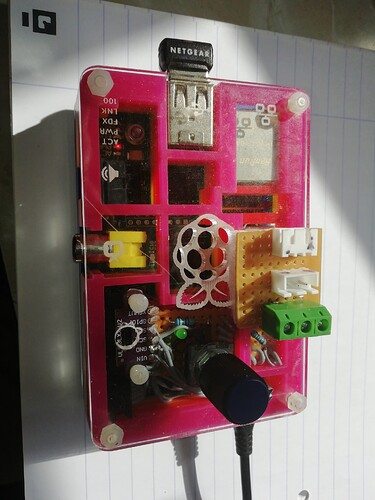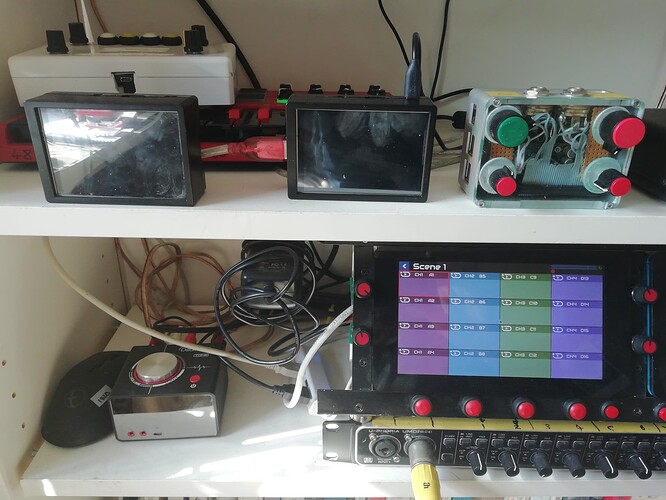I have loaded up OB-Xd with MiMi-d and the load is lighter. As you might have noticed I’ve fired up a lot of Pi3’s recently and have been distracted by this as an enterprise, and I’ve also had a clock to repair and readjust which has involved a new Thingy…
Which is an original pi model b with a distance sensor for measuring a clock pendulum position. So my only excuse is discovering that Pi3 seem, for want of a better word, a little more agile, I’ve been revising VERY early pi’s to see what I can get them to do, now that the PI software release seems considerably more mature. We’ve also just spent a fair amount of hard won money getting the clock serviced and a bit more for the problems that emerged from having the clock dissembled. The need for checking it’s accuracy over the next week has pushed its way to the front of the queue. It’s running fast by about a minute every two days so we are giving it a week to settle in and then we will start adding and removing pendulum weights. But locking a phase lock loop to the pendulum is one way of checking the results, especially when combined with a few one-wire sensors for temperature measurement. The results are transmitted as qmidinet messages as it didn’t seem sensible to invent a message protocol just for one clock in Sandbach when we could make something that will sing it’s state. I’m actually trying to make that tune melodious as it locks. . . .
I have got two pi 3s running sise by side one running obx and the other running MiMi-d but they are unplugged at the moment to allow clock development. Worry not they will return. I have been running them both monophonically to avoid clunks and bumps and I will be putting together a test sequence to exercise them similarly. I’ve not been too selective in patches used but that would seem to be beneficial research to see what can be learned.
Three pi3s waiting to be employed. The one on the right is going to end up as violin effect pedal. I tend to rotate around several projects at once but the MiMi d is running from the motor 61 as my default keyboard at the moment.


